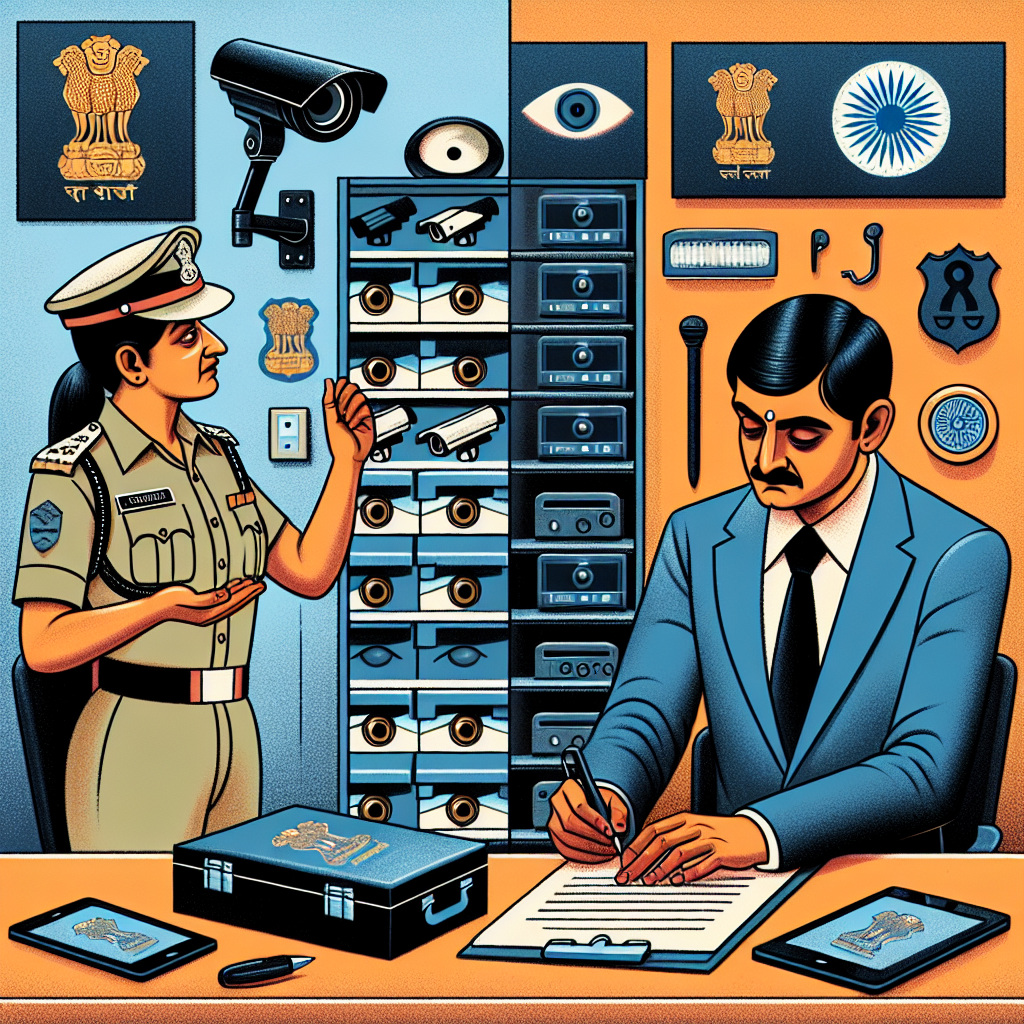India Strengthens Regulation on Surveillance Equipment Industry
India has recently stepped up its regulation of the surveillance equipment industry, following in the footsteps of the United States, the United Kingdom, and Australia, which have either banned or restricted the sale of communication and monitoring devices produced by Chinese companies such as Hikvision and Dahua to reduce national security risks.
According to reports from Reuters, Indian regulatory agencies have introduced a new policy that requires closed-circuit television (CCTV) camera manufacturers to submit hardware, software, and source code to government laboratories for evaluation.
A senior Indian official involved in formulating the policy cited concerns of espionage activities by the Chinese government as the reason behind this new measure.
As early as 2021, a former Deputy Minister of the Information Technology Department under the Modi government had pointed out in parliament that the installation of one million CCTV cameras from Chinese companies by government agencies could potentially transmit video data to foreign servers, posing national security vulnerabilities.
Under the new regulation that took effect in April of this year, surveillance equipment from companies like China’s Hikvision, Xiaomi, and Dahua, Korea’s Hanwha, and the U.S.’s Motorola Systems must undergo testing at Indian government labs before being allowed for sale in India, the country with the largest population globally.
This policy applies to all models of internet-connected CCTV surveillance cameras produced or imported after April 9, 2025.
Former Indian cybersecurity chief Gulshan Rai stressed that “the risk of espionage always exists,” with anyone potentially able to operate and control internet-connected CCTV cameras from unfavorable locations, emphasizing the need for reliable and secure devices.
On April 3, Indian regulatory authorities held a meeting with executives from 17 domestic and foreign surveillance equipment manufacturers. Official meeting records revealed that many manufacturers expressed unpreparedness for the new certification rules and lobbied for a delay in their implementation, but their efforts were unsuccessful.
The government responded by stating that India’s policy aims to address a real security issue and must be strictly enforced.
The Ministry of Information Technology informed executives that they may consider certifying more testing laboratories.
In December of last year, India stated that the CCTV surveillance rules were intended to “enhance the quality of domestic monitoring systems and network security.”
In recent years, millions of CCTV cameras have been installed in cities, offices, and residential areas across India to enhance security monitoring. Official data shows that New Delhi alone has over 250,000 cameras, most of which are installed on poles at key locations.
Analysts from market research firm Counterpoint Research, such as Varun Gupta, predict that the rapid proliferation of surveillance equipment will drive the Indian camera market, with sales expected to increase from $3.5 billion in 2020 to $7 billion by 2030.
Gupta noted that around 80% of surveillance camera components are sourced from China.
In 2022, the United States prohibited the sale of telecommunications and surveillance equipment produced by Chinese companies like Huawei, ZTE, Hytera, Hikvision, and Zhejiang Dahua due to national security risks. The UK and Australia also tightened their controls on surveillance equipment manufactured in China.
China’s National Security Law requires organizations and companies to cooperate with authorities’ intelligence work, intensifying concerns worldwide.
Earlier this month, Reuters reported that American experts discovered unidentified communication devices in some Chinese-made solar inverters during product inspections.
Since the border clashes between India and China in 2020, India has banned dozens of mainland Chinese applications, including TikTok. India has also tightened foreign investment rules with countries sharing its land borders.
Senior Indian officials stated that the “remote detonation pager” incident in Lebanon last year further heightened India’s concerns about the misuse of technology equipment, prompting India to accelerate regulatory measures in the surveillance equipment industry.
Last month, Xiaomi was informed by the Indian surveillance equipment regulatory department that they could not be evaluated due to internal regulations requiring the company to provide additional registration details for two Chinese manufacturers as part of the assessment process.
Xiaomi stated that the organization responsible for laboratory testing in India indicated that this requirement applied to applications from bordering countries with India.
As the global landscape continues to grapple with cybersecurity and national security challenges, countries like India are taking proactive steps to safeguard their critical infrastructure and data from potential threats, particularly those associated with surveillance equipment and technology originating from geopolitically sensitive regions.

